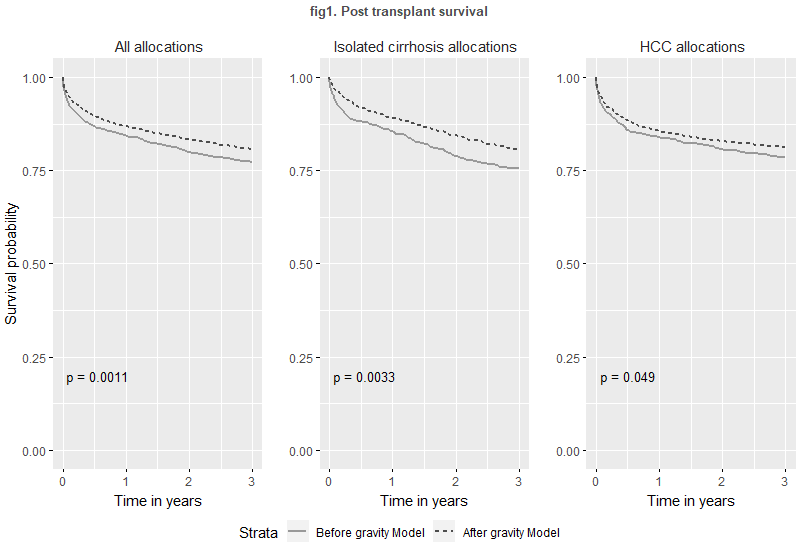Moving from Local Allocation to National Allocation Using Gravity Model
1Agence de la biomedecine and INSERM U1018, Saint-Denis la Plaine and Villejuif, France, 2Agence de la biomedecine, Saint-Denis la Plaine, France
Meeting: 2019 American Transplant Congress
Abstract number: C278
Keywords: Allocation, Ethics, Liver transplantation
Session Information
Session Name: Poster Session C: Liver: MELD, Allocation and Donor Issues (DCD/ECD)
Session Type: Poster Session
Date: Monday, June 3, 2019
Session Time: 6:00pm-7:00pm
 Presentation Time: 6:00pm-7:00pm
Presentation Time: 6:00pm-7:00pm
Location: Hall C & D
*Purpose: Most allocation scheme are based on optimized or administrative boundaries that do not allow transplant candidates without national priority to access a graft from another allocation area, even if they are physically close to it. This situation leads to inequities especially for most urgent candidates. To deal with this issue, a continuous geographical allocation model, referred to as a gravity model was introduced in 2011 in France for liver transplantation (LTx) to replace the previous concentric (local-regional-national) geographical model. We report on how such a model resulted in more equitable access to liver transplantation by introducing a spatial interaction between the distance and the medical condition of the liver transplantation candidates, summarized into a medical score.
*Methods: All patients registrered on the national waiting list for a LTx from 2007 to 2011 (before implementation of gravity model , n = 4246) and from 2011 to 2014 (after implementation of gravity model, n = 4907) were included in our study, using data from the Agence de la biomédecine database (CRISTAL). A 3-years follow up at Decembrer 31, 2017 was required. Death and dropout from the waiting list, post-transplant survival, cold ischemia and teams’ travels by LTx candidate’s medical score were compared between the two periods.
*Results: Compared to our previous LTx allocation scheme, most urgent candidates got an improved access to LTx all over the country. Very low MELD score cirrhotic patients (<15), whose registration on the waiting list was still allowed, got a very limited access to LTx, with no increase in death on the waiting list. Death and withdrawal from the waiting list dropped from 15% one year after the implementation and post-transplant survival significantly increased (fig.1). Cold Ischemia time has been reduced with no change on cumulated teams’ travel time..
*Conclusions: This disruptive alternative to arbitrary administrative boundary in organ allocation provides a compromise between distance and candidate’s urgency. This model also fixed the disparity problem encounter with geographical boundaries, allowing candidates close to a graft but not in its allocation zone to access this organ.
To cite this abstract in AMA style:
Bayer F, Audry B, Antoine C, Jasseron C, Legeais C, Bastien O, Jacquelinet C. Moving from Local Allocation to National Allocation Using Gravity Model [abstract]. Am J Transplant. 2019; 19 (suppl 3). https://atcmeetingabstracts.com/abstract/moving-from-local-allocation-to-national-allocation-using-gravity-model/. Accessed December 27, 2025.« Back to 2019 American Transplant Congress

